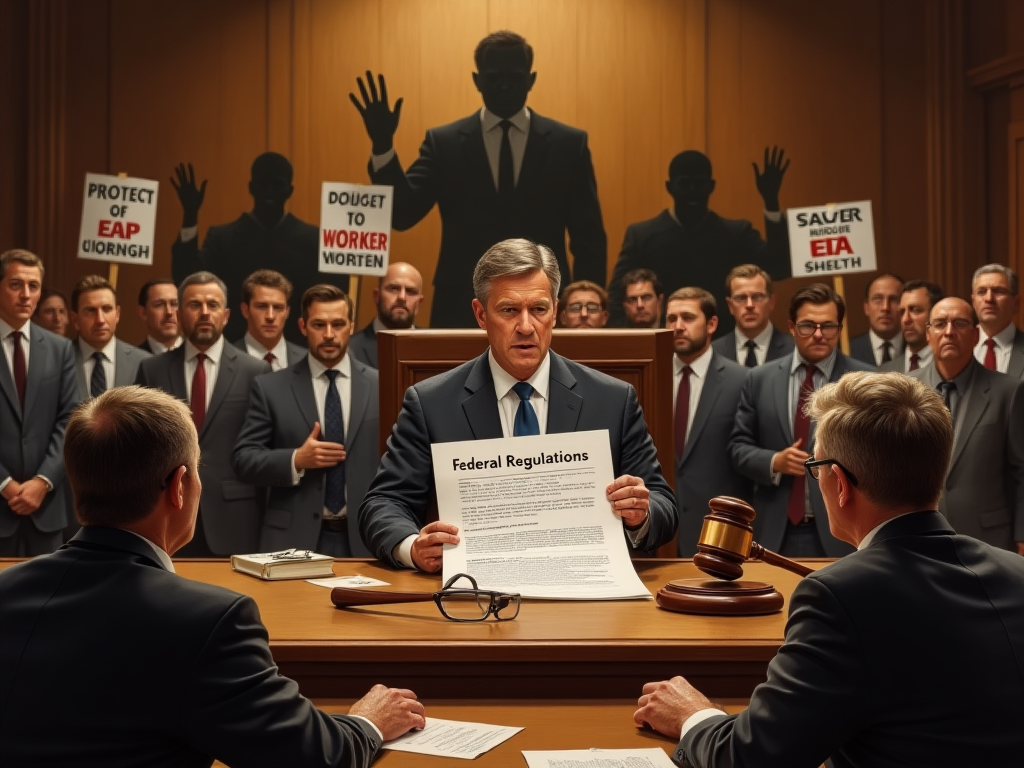
Imagine the following scenario: A federal judge with no medical education supplants the FDA in the matter of which drugs are safe. Or a court throws out EPA pollution standards on the basis that the language of the Clean Air Act is too vague. That all sounds crazy, right? Such is the prospect we risk awaiting should the Supreme Court nullify Chevron doctrine- a legal principle, which has influenced the definition of laws in the United States since the past four decades.
In the case (Loper Bright Enterprises v. Raimondo) isn The battle is not another dry legal one. It is a direct attack on federal agency muscle, that of EPA and the FDA. Conservatives refer to it as a check on bureaucratic runaway bureaucracy. Progressives caution that it will cripple climate, labor and health safeguards. Who’s right? To dissect it–inasmuch as this ruling may spell out the new definition of how America is governed.
What’s the Chevron Doctrine—And Why Is SCOTUS Targeting It?
Chevron U.S.A., inc. Vs. NRDC required the Supreme Court back in 1984 to determine the meaning of ambiguous laws, which states that jurists ought to defer to the agencies of the United States government to define the regulations in cases where they are ambiguous with regard to the decision of the Federal government agencies as being reasonable. Why? There are scientists, economists, and other specialists in the agencies- not only lawyers. Such a principle became the spine of the contemporary regulation.
However, the conservative supermajority of the Court now appears to be prepared to destroy it. Conservative judges such as Neil Gorsuch (who has denounced Chevron as a form of judicial abdication) warn that it elevates too much power to the hands of unelected bureaucrats. In the present case, it is fishing corporations that are struggling against a rule in which they are forced to pay the monitors: this rule is issued on the basis of vague statutory language. The consequences of SCOTUS ruling in their favor may be humongous.
Real-World Impact:
- More than 1,500 federal regulations are based on Chevron.
- New legal challenges may arise to the mercury limits of the EPA, OSHA workplace regulations and even FDA approval of drugs.
Agency Armageddon: Who Gets Hit Hardest?
The Agency of Climate & Environment (EPA)
Suppose the EPA attempts to control carbon emission of power plants. In the absence of Chevron, a Trump judge would be able to write, “The Clean Air Act does not mention CO2–so no, you cannot.” It is not the first time: In 2016, Clean Power Plan was put on hold due partly to the doubts of the EPA authority that was questioned in courts. Chevron perishes and all green regulations become a risk in the court.
Labor & Worker Safety (NLRB, OSHA)
The NLRB has recently decided that Starbucks discriminates against union organizers by encouraging them to be dismissed. Yet once the judges begin to question the interpretation of labor law by NLRB, then the protections are eliminated. The same goes with OSHA COVID regulations-they will have year long lawsuits over any future pandemic actions.
FDA, CDC – Public Health
Decades ago, the FDA approved mifepristone (an abortion pill). Anti-abortion organizations claim, though, that the agency was misinterpreting the law. With Chevron, even one judge can take it off the market-against all medical opinion.
Who Wins? Who Loses?
end/mastering/masters. sky is the limit but big business will rejoice. The reduced amount of regulations decreases the cost of doing business, as well as making it less effective in protecting the consumer. To conservative activists, this is a taming of deep state. To the ordinary American it may mean:
- Dirtier air in case the EPA rules are blocked.
- Dangerous working conditions in case of the shrinking of OSHA.
- Delays drugs in case judges trample over FDA scientists.
Expert Take:
“This is not about the ‘returning power to the people’ but about moving the power of experts to the judges. Is that the kind of world we want? A district court of one finding overturning decades of scientific consensus with no qualifications?“
-Jody Freeman, Harvard Law professor and Former Obama Climate advisor
What Happens Next?
- Nuclear Option: The Chevron case is eviscerated and a tidal wave of lawsuits arise challenging the pre-existing regulations.
- Watered-Down Version: SCOTUS maintains certain deference whilst constraining agencies.
- Congress to the Rescue (Not bloody likely): Congress can make it clearer in statutes–but in this era of gridlock, good luck.
Final Thought: Who Do You Trust to Govern?
When Chevron is abolished, we are not merely altering a legal doctrine–we are placing law-making on the lap of judges who are themselves not experts on science, on medicine, or on economics. Is that better? Or merely another sort of havoc?
Your Turn: Does the agencies need to retain its power-or is this a necessary corrections? Sound off in comments.